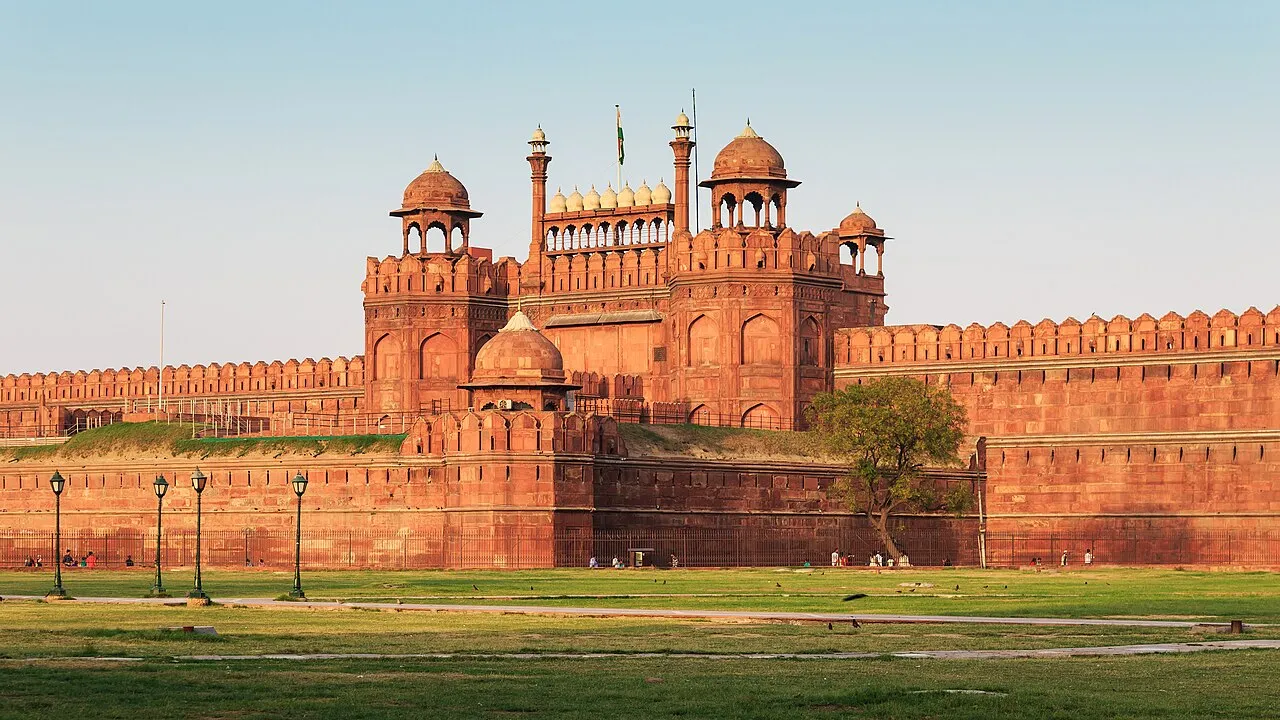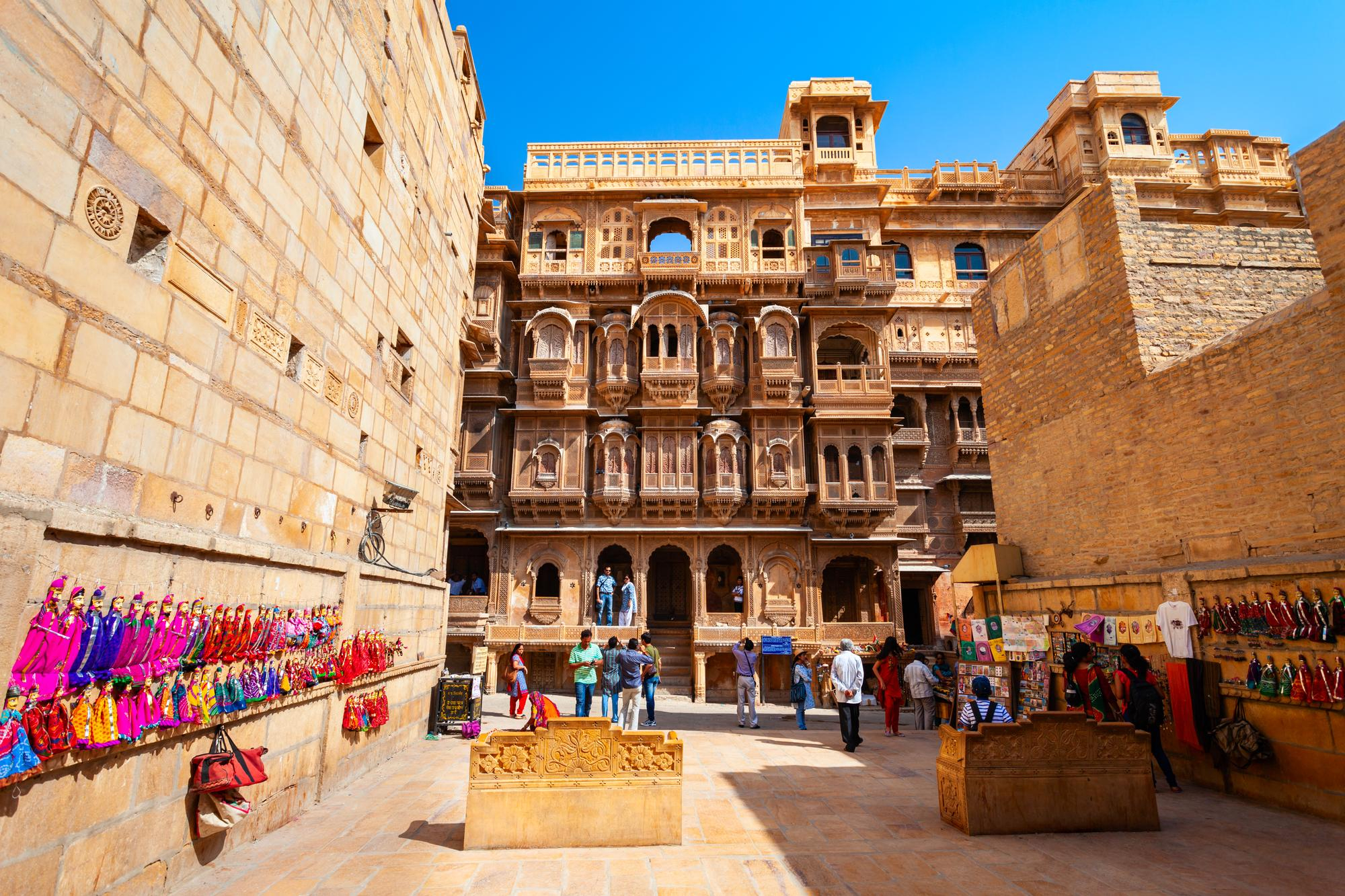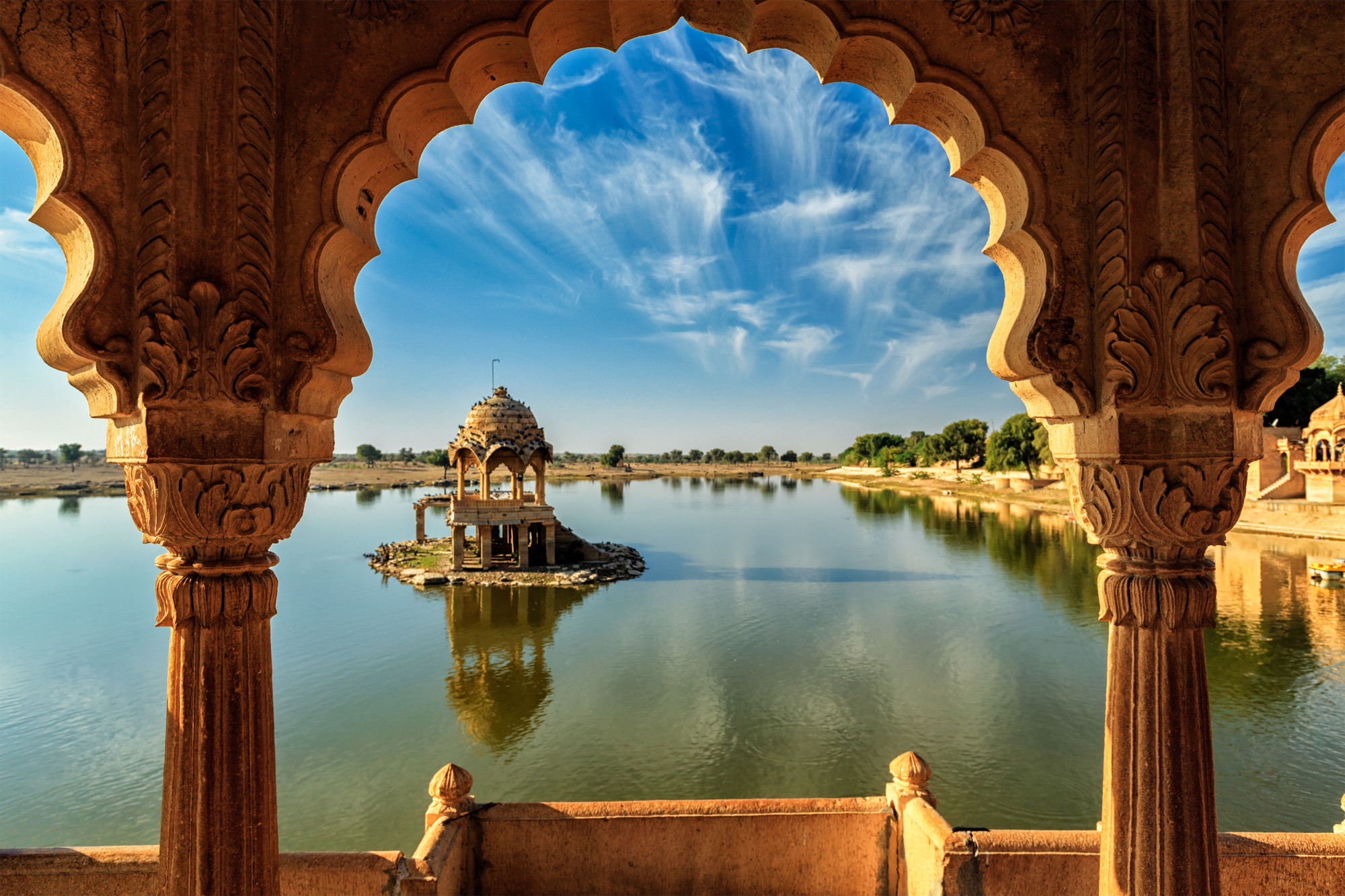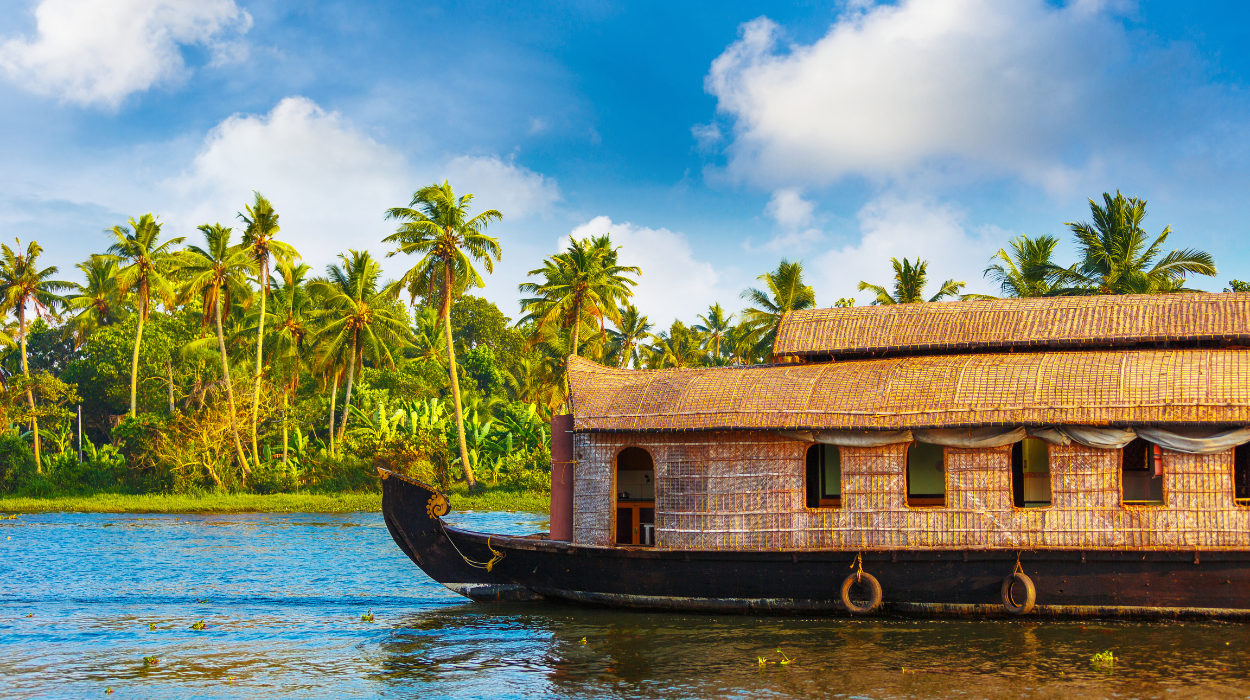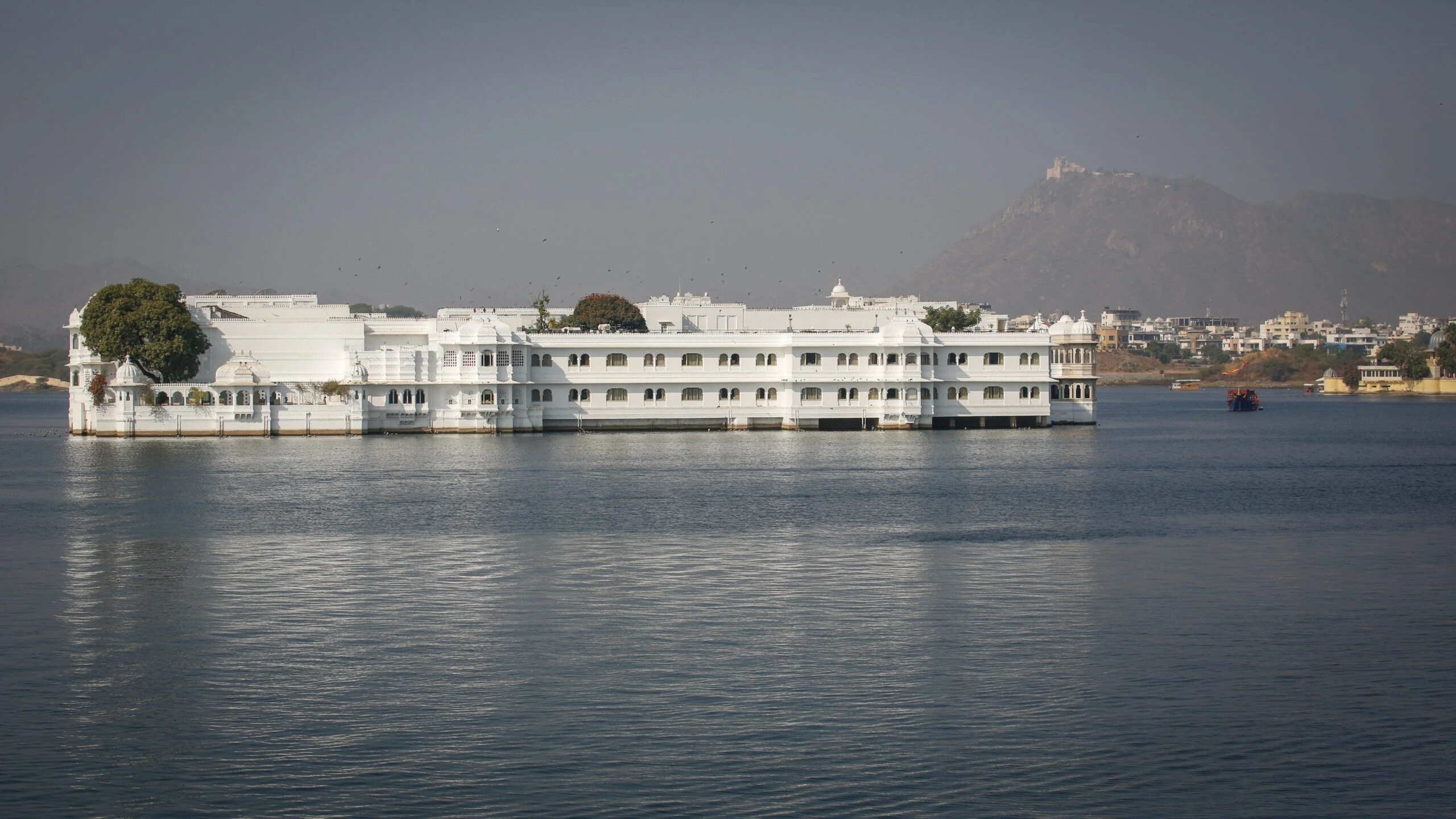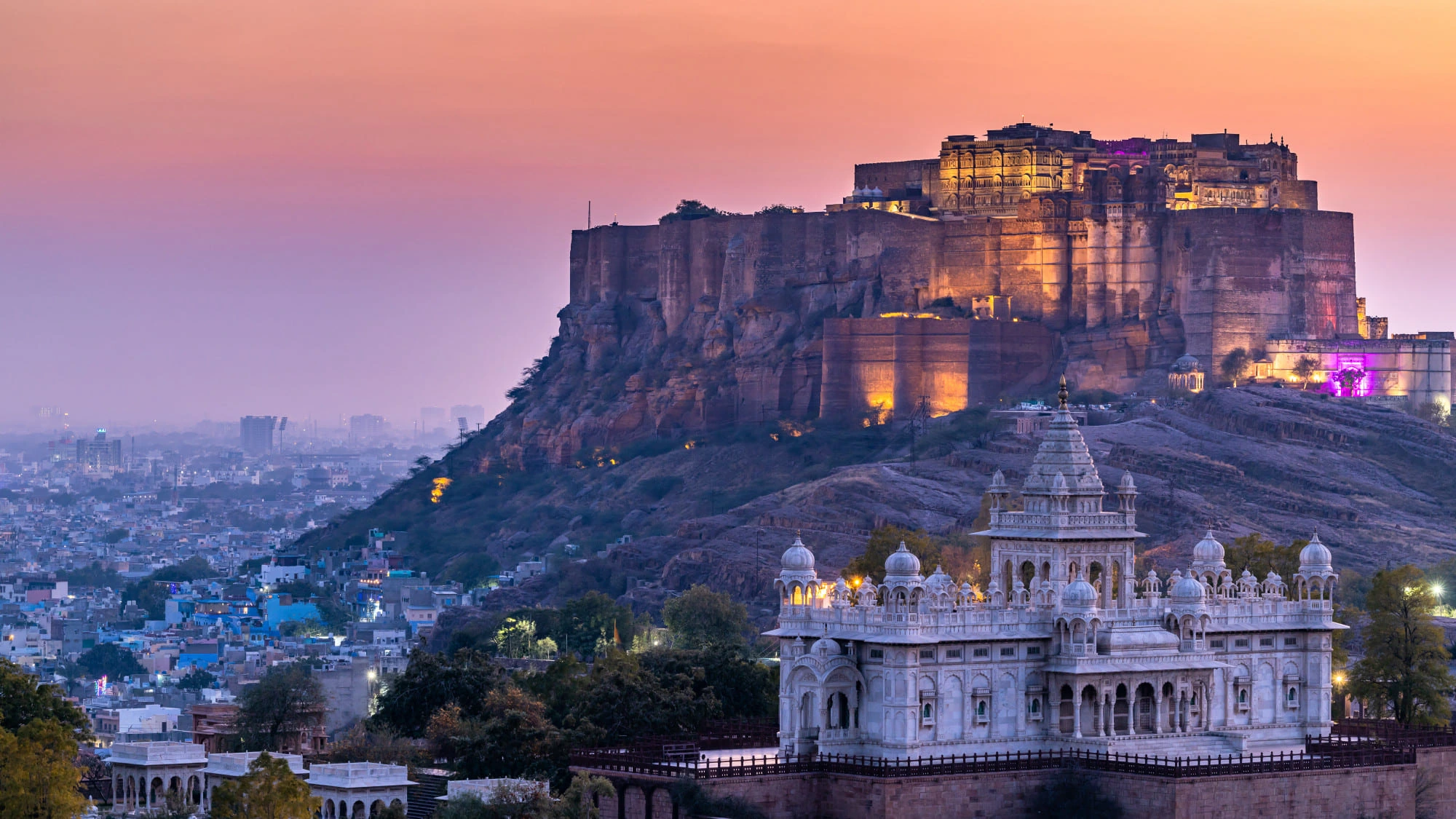The Red Fort Delhi, locally known as Lal Kila, stands as one of India’s most iconic landmarks and a powerful reminder of its imperial Mughal past. Located in the heart of Old Delhi, this majestic fortification once served as the main residence of the Mughal emperors for nearly 200 years. Built using striking red sandstone, the fort is not only an architectural masterpiece but also a UNESCO World Heritage Site that continues to captivate historians, travelers, and heritage enthusiasts alike. Whether you’re drawn to its imposing gateways, intricate carvings, or the political significance it holds in modern India, the Red Fort remains an essential stop for anyone exploring Delhi’s rich cultural landscape.
Where is Red Fort Situated?
The Red Fort is located in Old Delhi, a historic district that once formed the walled city of Shahjahanabad. This strategic placement allowed it to serve as the ceremonial and political center of the Mughal Empire. Today, the fort stands prominently near the Chandni Chowk area and faces the Netaji Subhash Marg, a major road that connects visitors to other heritage sites in the city.
For those wondering where is Red Fort situated, the fort lies just a short walk from Lal Qila Metro Station on the Violet Line of the Delhi Metro, making it highly accessible to both local and international tourists. Nearby landmarks include Jama Masjid, Raj Ghat, and Chandni Chowk Market, all within a 2–3 kilometer radius, offering a complete historical and cultural experience in one visit.
Using well-connected public transport, the fort can be reached easily from central hubs like Connaught Place or New Delhi Railway Station. Auto-rickshaws and taxis are also readily available in the area. The strategic location not only enhances its visibility but also keeps it embedded in the everyday rhythm of Delhi’s urban life.
This accurate placement, supported by geographic and transit references, ensures that visitors can plan their visit effectively and gain deeper appreciation for the monument’s continued relevance in India’s historical narrative.
Who Built Red Fort in Delhi and Why?
The majestic Red Fort, or Lal Kila, was commissioned by Mughal Emperor Shah Jahan in 1638, when he decided to shift the capital of his empire from Agra to a newly established city in Delhi called Shahjahanabad. The fort was completed in 1648 after a decade of meticulous planning and construction.
If you’re wondering who built Red Fort in Delhi, the answer lies in Shah Jahan’s ambitious vision to create a fortified palace that reflected both Mughal power and architectural sophistication. This vision was brought to life by a team of skilled architects, engineers, and artisans.
✦ Architectural Purpose and Symbolism:
- Red Fort built by Shah Jahan was not just a military structure but a grand royal residence and center of governance.
- It was designed in the Indo-Islamic and Persian styles, featuring symmetrical gardens, arched gateways, and intricate lattice work.
- The fort’s layout was based on the charbagh (four-quadrant garden) concept, representing paradise in Islamic tradition.
- Structures like the Diwan-i-Aam (Hall of Public Audience) and Diwan-i-Khas (Hall of Private Audience) signified transparency and grandeur in imperial affairs.
- Its massive red sandstone walls, which give the monument its iconic appearance, were meant to symbolize strength, permanence, and sovereignty.
For those still curious who made Lal Kila, it’s important to credit the vast team of Mughal artisans and builders who translated Shah Jahan’s imperial dream into a lasting architectural masterpiece. Today, it stands not only as a historic fortification but also as a living emblem of India’s cultural and political heritage.
When Was Red Fort Built?
For those seeking to understand when was Red Fort built, the construction of this iconic structure began in the year 1638 and was completed in 1648, marking a full decade of architectural planning, labor, and artistry under the rule of Mughal Emperor Shah Jahan. The fort was envisioned as the crowning jewel of Shahjahanabad, his new capital in Delhi, which would reflect the political and cultural power of the Mughal Empire.
✦ Historical Context:
- The decision to build the Red Fort came after Shah Jahan moved the capital from Agra to Delhi to establish a new center of administration.
- The fort was constructed as part of a grand urban vision, designed by chief architect Ustad Ahmad Lahori, who is also credited with designing the Taj Mahal.
- Its completion in 1648 established it as the seat of Mughal authority and residence for successive emperors for nearly 200 years.
- According to the Archaeological Survey of India (ASI), the Red Fort is considered one of the finest examples of Mughal military architecture, showcasing a harmonious blend of Persian, Timurid, and Indian design principles.
Even today, the Red Fort stands as a testament to the opulence and strategic foresight of the Mughal period, its towering sandstone walls and carefully laid gardens still echoing the ambitions of one of history’s most powerful empires.
Red Fort History Through the Ages
The Red Fort history spans over 375 years, reflecting the shifting tides of India’s political and cultural landscape. From its origins as a royal Mughal residence to its symbolic role in modern India, the fort—also known as Lal Killa—has remained at the heart of national identity.
✦ Mughal Era (1648 – 1857)
- Built by Shah Jahan as the palace-fortress of his new capital, the fort served as the epicenter of Mughal administration.
- Lavish ceremonies, imperial addresses, and everyday governance took place within its ornate halls like Diwan-i-Khas and Rang Mahal.
- Delhi Lal Kila symbolized the zenith of Mughal power, culture, and architectural achievement.
✦ British Colonial Period (1857 – 1947)
- After the 1857 First War of Independence, the British defeated the last Mughal emperor, Bahadur Shah Zafar, and exiled him.
- The British looted the fort’s treasures, demolished several inner structures, and turned parts of it into military barracks.
- The fort lost its royal stature but became a symbol of colonial oppression and Indian resistance.
✦ Post-Independence Significance
- On 15th August 1947, Prime Minister Jawaharlal Nehru unfurled the Indian national flag at the Lahori Gate, marking the birth of a free India.
- Since then, the Prime Minister hoists the tricolor and addresses the nation from the Red Fort every Independence Day, reinforcing its status as a symbol of sovereignty.
- The fort is also a key site for Republic Day celebrations, heritage walks, and cultural events organized by the Archaeological Survey of India.
From the time of the emperors to the present day, the Lal Killa has witnessed the fall of dynasties, the rise of colonial powers, and the dawn of a democratic nation. Its walls are not just built of sandstone but of stories, revolutions, and remembrance.
Is Red Fort Open Today? Entry Timings & Tickets
One of the most common questions from travelers is, “Is Red Fort open today?” The answer is usually yes, as the fort remains open to the public on most days of the week, with some exceptions. Here’s what you need to know before planning your visit:
✦ Regular Opening Days & Timings
- Open Days: Tuesday to Sunday (Closed on Mondays)
- Opening Hours: 7:00 AM to 5:30 PM
- Best Time to Visit: Early mornings or late afternoons to avoid the midday heat and crowds
If you’re specifically searching “red fort open today,” always check the official updates before your visit—especially during national holidays or VIP movement days, when public access may be restricted.
✦ Entry Tickets
- Indian Citizens: ₹35 per person
- Foreign Tourists: ₹500 per person
- Children under 15 years: Free entry
- Light and Sound Show: Additional charges apply (₹80 for Indians, ₹200 for foreigners, varies by timing and language)
Tickets can be purchased online through the ASI’s official website:
The Red Fort also offers audio guides, guided tours, and combo tickets with nearby monuments like Salimgarh Fort and museums within the complex.
Whether you’re a history enthusiast or a casual visitor, planning ahead helps ensure a smooth and enriching experience at this UNESCO World Heritage Site.
Fascinating Facts About Red Fort
With its grand architecture, historical relevance, and cultural symbolism, the Red Fort continues to amaze visitors from around the world. Here are some captivating insights and lesser-known facts about Red Fort that highlight its uniqueness:
✦ 1. A UNESCO World Heritage Site
In 2007, the Red Fort was declared a UNESCO World Heritage Site for its exceptional architectural and cultural significance. It stands as a globally recognized symbol of India’s rich Mughal heritage.
✦ 2. Built from Red Sandstone
The fort gets its name from the massive red sandstone walls, which stretch over 2.4 kilometers in length and rise to a height of up to 33 meters, giving it a commanding presence in Old Delhi.
✦ 3. Designed by the Architect of the Taj Mahal
The chief architect, Ustad Ahmad Lahori, also designed the Taj Mahal. His vision brought together Persian, Timurid, and Indian architectural elements, making the Red Fort a masterpiece of Mughal design.
✦ 4. Home to the Diwan-i-Khas
Inside the fort lies the Diwan-i-Khas, or the Hall of Private Audience, where the emperor met dignitaries. It once housed the fabled Peacock Throne, a symbol of Mughal opulence, later taken by invaders.
✦ 5. A Walled City Within a City
The Red Fort was designed not just as a palace but as a self-contained city—complete with gardens, mosques, markets (like Chatta Chowk), and residential quarters for nobles and staff.
✦ 6. Center of Independence Celebrations
Every Independence Day, the Prime Minister of India hoists the national flag from the fort’s Lahori Gate, delivering a speech to the nation, a tradition that began with Jawaharlal Nehru in 1947.
✦ 7. Survived Multiple Attacks and Regimes
Despite being looted and damaged by the British after 1857, and facing wear over time, the fort still stands strong—restored and protected as a legacy of India’s enduring resilience.
These facts about Red Fort show that it’s more than just a historic monument—it’s a living narrative of India’s past, present, and aspirations for the future.
Common Misconceptions: Redford India vs Red Fort
Many people search for “Redford India” online when they actually mean Red Fort, also known as Lal Kila in Hindi. This confusion usually happens because of spelling mistakes or mispronunciations, especially when using voice search.
✦ What’s the Correct Name?
- The correct name is Red Fort, a famous historical monument in Old Delhi.
- Locals also call it Lal Kila, which means “Red Fort” in Hindi.
- “Redford India” is not a real place or an official name—it’s just a common error in searches.
✦ Why the Confusion Happens
- Some people spell it as Redford instead of Red Fort, especially in quick typing or speech-to-text apps.
- It might also happen because “fort” and “ford” sound similar when spoken quickly.
✦ Official Status
- Red Fort is a UNESCO World Heritage Site.
- It is managed by the Archaeological Survey of India (ASI) and is one of the most important monuments in the country.
So next time you search, remember — it’s Red Fort, not Redford India!
Travel Tips for Visiting Red Fort in Delhi
Planning a trip to the Red Fort can be an unforgettable experience if you’re well-prepared. To make the most of your visit, here are some practical travel tips covering the best time to go, what to bring, and important visitor rules.
✦ Best Time to Visit
- The ideal time to visit the Red Fort is during the cooler months (October to March).
- Try to arrive early in the morning (around 7:00 AM) to avoid crowds and explore peacefully.
- Weekdays are less crowded than weekends and national holidays.
✦ What to Carry
- Carry a valid photo ID for entry.
- Bring a water bottle, sunglasses, and a hat or umbrella—especially in summer.
- Wear comfortable shoes as you’ll be walking across large courtyards and gardens.
✦ Guided Tours and Audio Guides
- Guided tours are available at the entry gate and can help you understand the fort’s rich history.
- The ASI-approved audio guides are also a good option for self-paced exploration.
✦ Rules to Follow
- Photography is allowed in most areas but not inside museums or restricted zones.
- Tripods, drones, and large professional cameras may require prior permission.
- Avoid carrying large bags as security checks can delay your entry.
- Smoking, littering, and loud behavior are strictly prohibited within the premises.
✦ Entry Lines and Accessibility
- Entry lines can get long, especially during holidays—booking tickets online can save time.
- Ramps and accessible restrooms are available for senior citizens and differently-abled visitors.
Whether you’re visiting for the history, architecture, or cultural value, being well-prepared ensures your trip to the Red Fort is smooth, respectful, and memorable.

